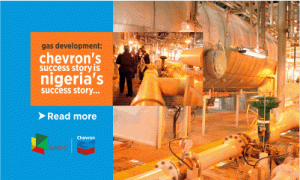The acceptability of the Economic Recovery Plan (ERP) of the federal government is likely going to depend on the public perception of the hike in Value Added tax (VAT) which it moved from current five per cent to 15 per cent.
It was not however clear if the hike was truly adopted by consulted stakeholders during the public hearing on the ERP.
However, a closer look at the plan showed that the increase in VAT rate targeted only luxury items, which the document stated would commence in 2018. Also targeted is an increment in Companies Income Tax, where a total of N350bn is projected to be generated yearly.
It was not clear what items will fall into government’s definition of luxury items as in the case of former President Goodluck Jonathan in 2014, it named some items including champagne, alcoholic beverages, private jets, luxury cars based on engine capacity, and yachts as luxury items.
By the spirit of the new plan, government targets Gross Domestic Product of N81.38tn by 2020.
The document, read in parts; “Indeed, although the oil and gas sector represents about 10 per cent of the total GDP, it still accounts for 94 per cent of export earnings and 62 per cent of government revenues. Diversification of the economy must therefore extend to finding other sources of revenue and foreign exchange earnings.
“Policy objectives (are) to improve overall Federal Government revenues by increasing revenues from oil production and targeting non-oil revenue sources. Increase the tax base by raising the VAT rate for luxury items from five to 15 per cent from 2018, while improving CIT and VAT compliance to raise N350bn annually.”
The plan envisages that by 2020, Nigeria would have made significant progress towards achieving structural economic change with a more diversified and inclusive economy.
Major targets of the plan include amongst other, to deliver on five key broad outcomes, which are a stable macroeconomic environment; agricultural transformation and food security; sufficiency in energy (power and petroleum products); improved transportation infrastructure; and industrialisation focusing on small and medium-scale enterprises.
By the plan, the expected real GDP for 2017 would be between N69.4tn in 2017, N76.05tn in 2018, and N81.38tn 2019 and 2020, respectively.
Besides, the GDP growth rate, according to the document, is expected to rise from 2.2 per cent in 2017, to 4.8 per cent, 4.5 per cent and seven per cent in 2018, 2019 and 2020, respectively.
The report added that “The ERGP has set a GDP growth target of 4.62 per cent average annual growth between now and 2020. From the estimated negative growth of -1.54 per cent recorded in 2016, the real GDP is projected to grow to 2.19 per cent in 2017 and 4.8 per cent in 2018, before peaking at 7.0 per cent in 2020.
“The sectors each play a different role in driving the GDP growth, with agriculture and industry having the most important roles, and services having an increasingly important role in the later stages of the plan.
“Given the ERGP’s strong focus on agriculture, it has set a GDP growth target for the agriculture sector of 5.0 per cent in 2017, rising to 8.4 per cent by 2020, for an average growth rate of 6.9 per cent across the period.”
On job creation, the plan noted that it would enable the economy to increase the level of fresh jobs from 1.5 million in 2017 to 3.8 million, 4.3 million and 5.1 million in 2018, 2019 and 2020, respectively.









